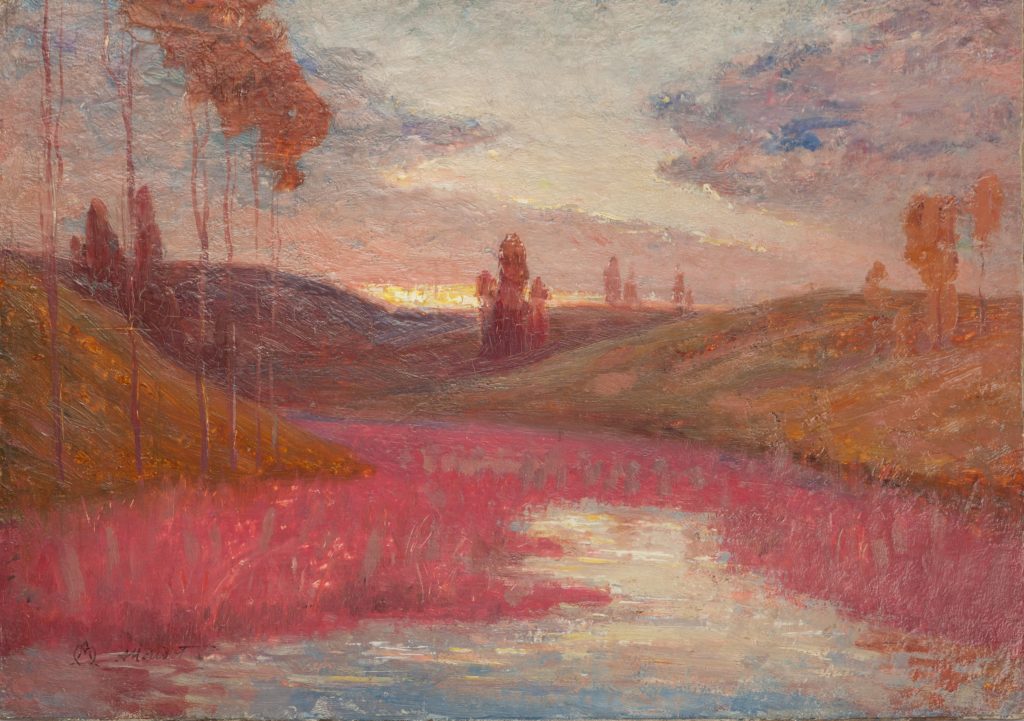Étude I pour Paysage mauve
Study I for Purple LandscapeOil on board and oil on canvas, circa 1900
Both signed on the lower left corner A. Morisot.
Size
19 x 30 cm and 21 x 30 cm
Provenance
Thence by descent ; Private collection, Lyon
Exhibition
Confidential until his rediscovery in the 1990’s, and today still certainly less known than his homonym Berthe with whom he shares no family links, Auguste Morisot is nonetheless a great regional master with many talents, as he was both a painter and a famous stained-glass maker. In the last decade, several exhibitions held in Lyon[1] have studied the artist’s originality. Born in Seurre and deceased in Brussels, Morisot however carved out his entire career in Lyon where he arrived in 1876, aged 19 years old. Between 1880 and 1885, he attended the École des Beaux-Arts de Lyon, where he later became professor.
Morisot followed the Lyon tradition of the “spirit painters” which he continued towards the 20th Century. Though most of his art seems to be, at first, non-religious, as the majority of his paintings and pastels are landscapes, in Morisot’s opinion however, Nature is God’s Creation and a testimony of His greatness: “Isn’t Art a perpetual admiration for the Divine work?”[2]. What is sure about these landscapes is that they translate a symbolist vision with a spiritual message. The present pieces were sketched in the making for a known painting, A Purple landscape, which belonged to a private collection and was given to the Lyon museum in 2015.
In these studies, Morisot depicted a colorful river shore, using a rare palette of pink and purples tones. The first sketch is more schematic and might have been completed in situ. The various elements are divided in different zones, separated by a thin black line. In the second one, Morisot increased the variety of colours: the yellows and blues create beautiful contrast with the purples touches. The present two paintings illustrate how Morisot elaborated the composition of his final work. In the latter, the composition is simplified, as he deleted the trees on the left. Moreover, some zones are darkened and others enlightened. Besides the influence of the Pont-Aven school and the Nabis, Morisot gives us here a great example of the mysticism of the late 19th Century Lyon school. The proximity with François-Auguste Ravier, also from Lyon, is undeniable, and his technique also recalls Albert Guilloux’s deserted and lyric landscapes.
[1] Auguste Morisot (1857-1951), du crayon au vitrail, Lyon, Musée des Beaux-Arts, 23 June – 24 September 2012 ; Dix ans d’acquisition, Lyon, Musée des Beaux-Arts, 29 May – 21 September 2015.
[2] « L’art n’est‑il pas […] une perpétuelle admiration de l’œuvre divine ? » (Letter from Auguste Morisot to Jean-Marie Reigner, dated 2 September 1924, Fonds Familial Morisot).






